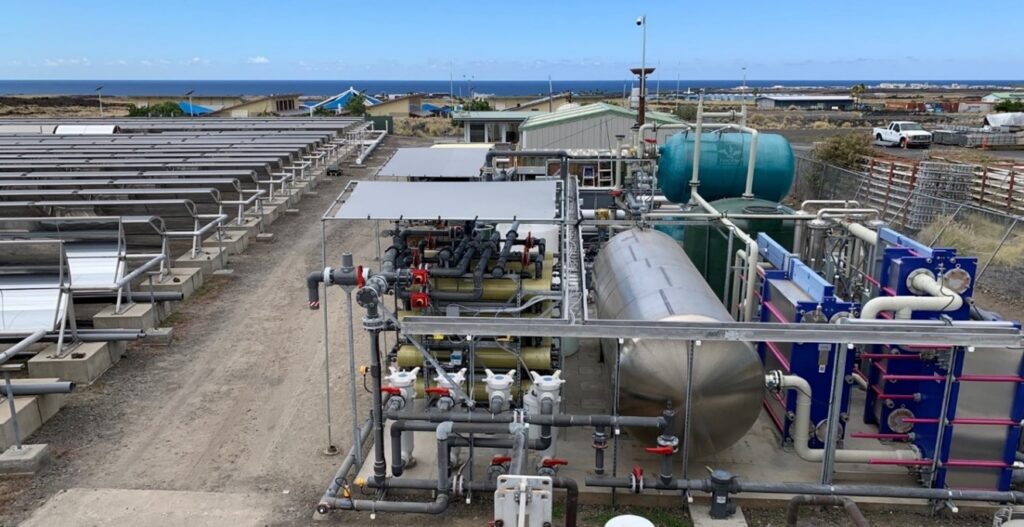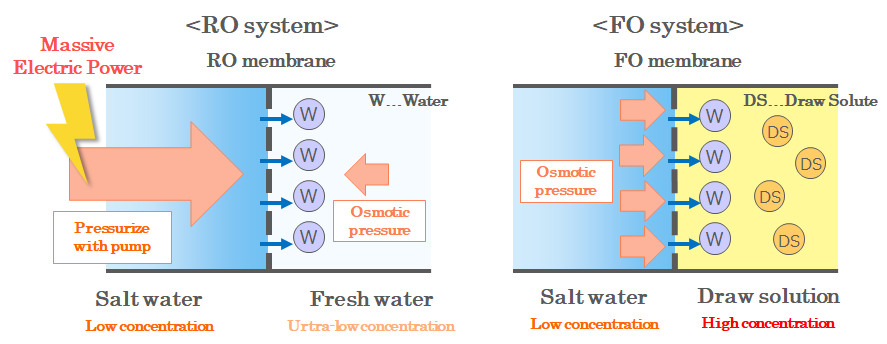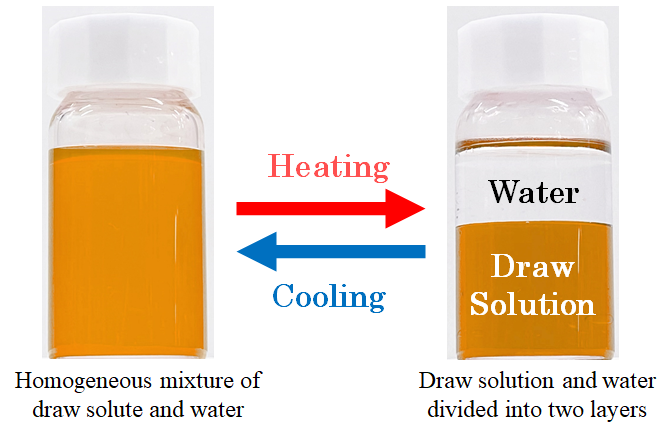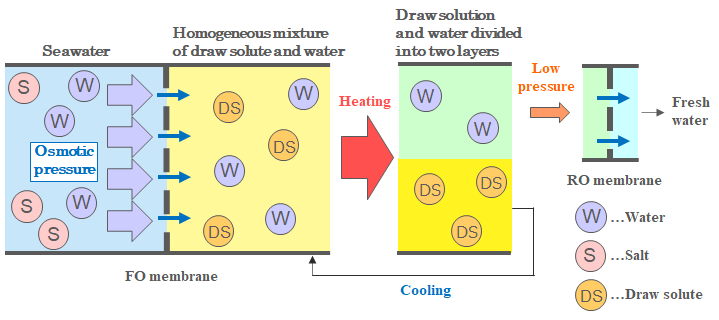Nippon Shokubai’s Newly Developed Material Contributed the Successful Demonstration of Groundbreaking Renewable Seawater Desalination Plant in Hawaii
- Sustainability
- Research and Development
NIPPON SHOKUBAI CO., LTD. (Headquarters: Osaka, Japan, President: Kazuhiro Noda, hereinafter “Nippon Shokubai”) combined forces with Trevi Systems Inc. (Headquarters: California, USA, CEO: John Webley, hereinafter “Trevi Systems” *1) in the development of the draw solution as a key component in the forward osmosis (hereinafter “FO”) system, which is a next generation system for seawater desalination and water treatment. With $4 million grant from US Department of Energy, Trevi Systems commenced a large scale project to demonstrate the production of fresh water at a volume of 500 m3 per day from seawater using the jointly developed draw solution on the islands of Hawaii in June, 2022 (Photo 1, *2) and completed the data collection in September, 2023.

In recent years, water shortage has become a serious problem in the world, and reverse osmosis (hereinafter “RO”) is widely used in the seawater desalination for agricultural and drinking water use and for treatment of industrial water. The RO system is a technology that involves the pressurization of seawater or wastewater over an RO membrane to remove salts (such as NaCl) and impurities. While this system enables the acquisition of high quality water, the large amount of electric power consumed by the pressurizing pump is considered an issue (Figure 1).

Meanwhile, the FO system is focused on as a means that will resolve this issue. The FO system utilizes the osmosis, which is a natural process and occurs when liquids of differing solute concentrations are separated by a semi-permeable membrane and water moves by the process of osmosis from the solution of lower concentration to that of higher concentration. In the seawater desalination, the FO system utilizes the difference in solute concentration in seawater and draw solution, and the natural osmotic pressure as a result of the draw solution on one side of a FO membrane (a semi-permeable membrane) to pull / transport fresh water from seawater into the draw solution with everything taking place under low pressure and energy conditions (Figure 1). Nippon Shokubai and Trevi Systems developed the draw solution to be separated from the recovered water using low grade thermal heat (Photo 2).

Trevi Systems is a company in the United States which was founded in 2010. Key elements of Trevi Systems’ FO system are the use of retrograde thermolytic solute draw solution and recycling of the draw solute back to the FO membrane (Figure 2). Trevi Systems conducted a pilot test to demonstrate the production of fresh water at a volume of 50 m3 per day from seawater in Middle East (the UAE) in 2016, which confirmed that the use of the FO system was able to reduce electric power consumption to about 1/3 compared to that of the RO system.

However, the improvement in the amount of water production is necessary for the widespread utilization of the FO system at full scale, and the improvement in the function of the draw solution as the key component is crucial for realizing this. Nippon Shokubai and Trevi Systems have successfully developed a draw solution with the capability of improving water production by 30% compared with the previous product. This developed draw solution was used in the demonstration pilot plant (500m3/day) operated by Trevi Systems on the islands of Hawaii (*2) .
Key achievements of the project include:
- The fresh water recovery ratio from sea water exceeded 65% surpassing commercial RO systems’ capabilities.
- Electrical energy consumption is 1/3 compared with RO systems.
- Competitive Capital Costs : Demonstrated capital costs competitive with existing RO desalination systems.
Trevi Systems is committed to further expanding the NELHA plant’s capabilities, with plans to increase capacity to over 6,000m3/day at the same site, and showcasing the potential for zero liquid discharge (*3) by the use of brine and brine concentration for mineral recovery.
The FO system is under consideration to be introduced for seawater desalination in areas with high demand for water, such as the Middle East, as well as for brine concentration to achieve zero liquid discharge. Nippon Shokubai will make further efforts to improve the performance and functions of the draw solution with a view toward future expansion of the FO system.
*1: About Trevi Systems
Trevi Systems Inc. is California based company who is a pioneer in forward osmosis technology for sustainable and efficient water desalination and brine concentration. With a commitment to innovation and environmental responsibility, Trevi Systems continues to redefine the possibilities in utilizing forward osmosis and pressurized forward osmosis to deliver clean water and other resources from the most challenging wastewaters.
For more information: https://www.trevisystems.com/
*2: FO seawater desalination project in Hawaii
The FO system by Trevi Systems was adopted in the Sun Shot program by the Department of Energy, USA. An experiment will be conducted to demonstrate the desalination of seawater using the solar heat collection facility owned by the Natural Energy Laboratory of the Hawaii Authority (NELHA).
*3: zero liquid discharge (ZLD)
One of water treatment processes intended to reduce wastewater and produce clean water that is suitable for reuse. ZLD systems purify and recycle virtually all wastewater received.
The press release issued by Trevi Systems is here